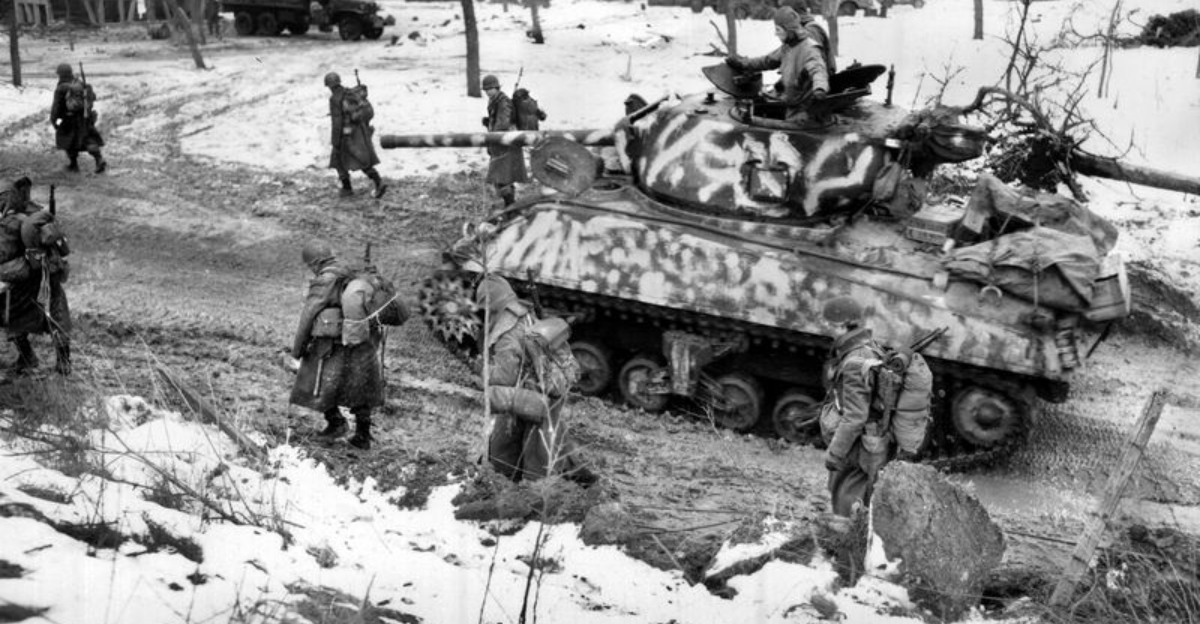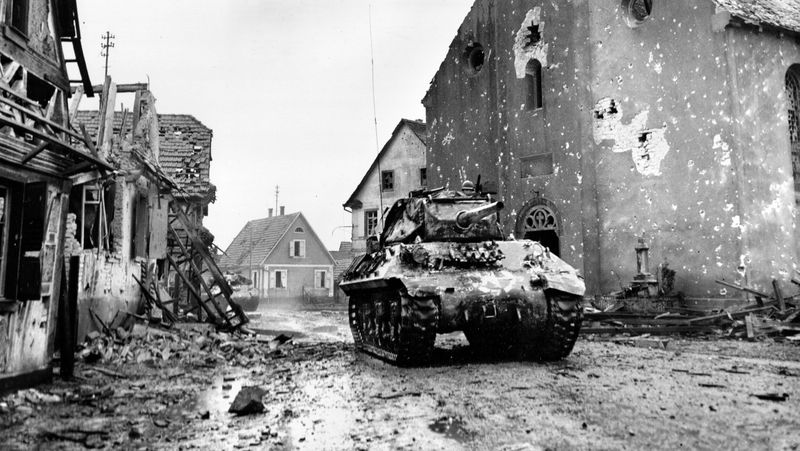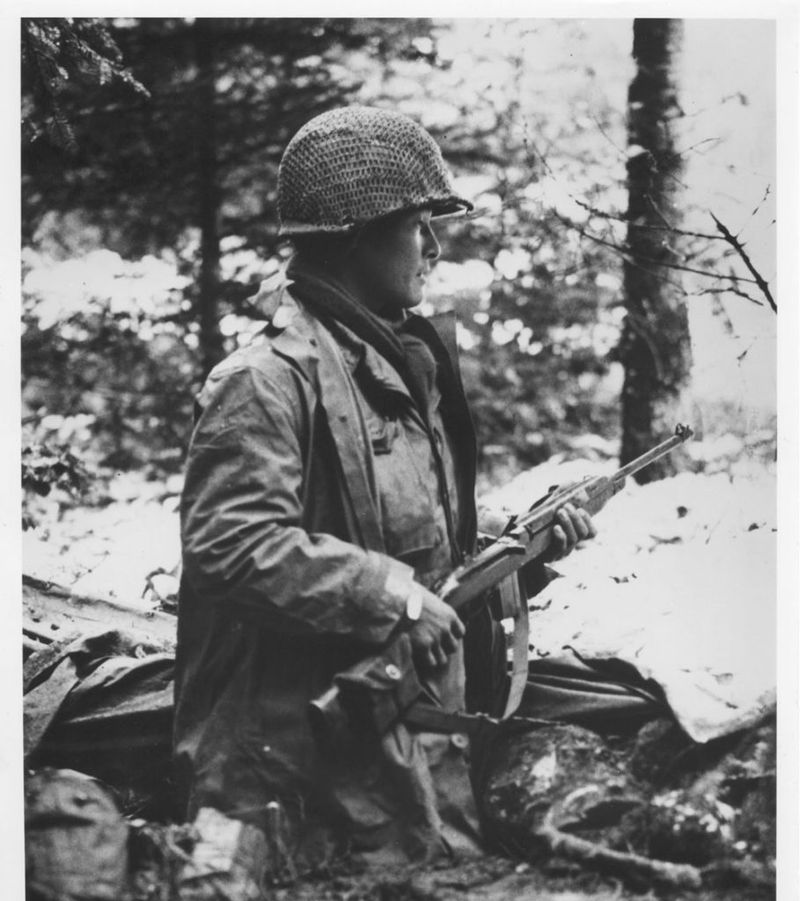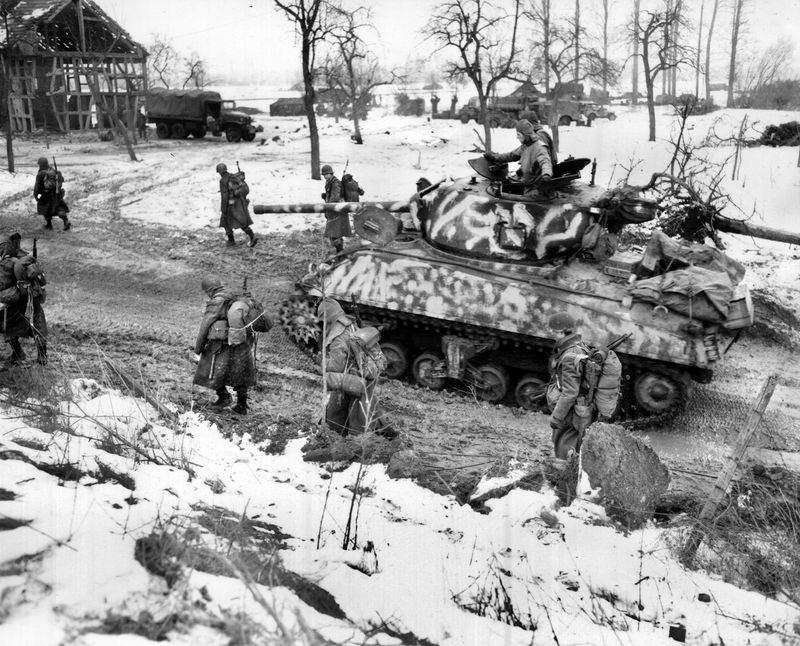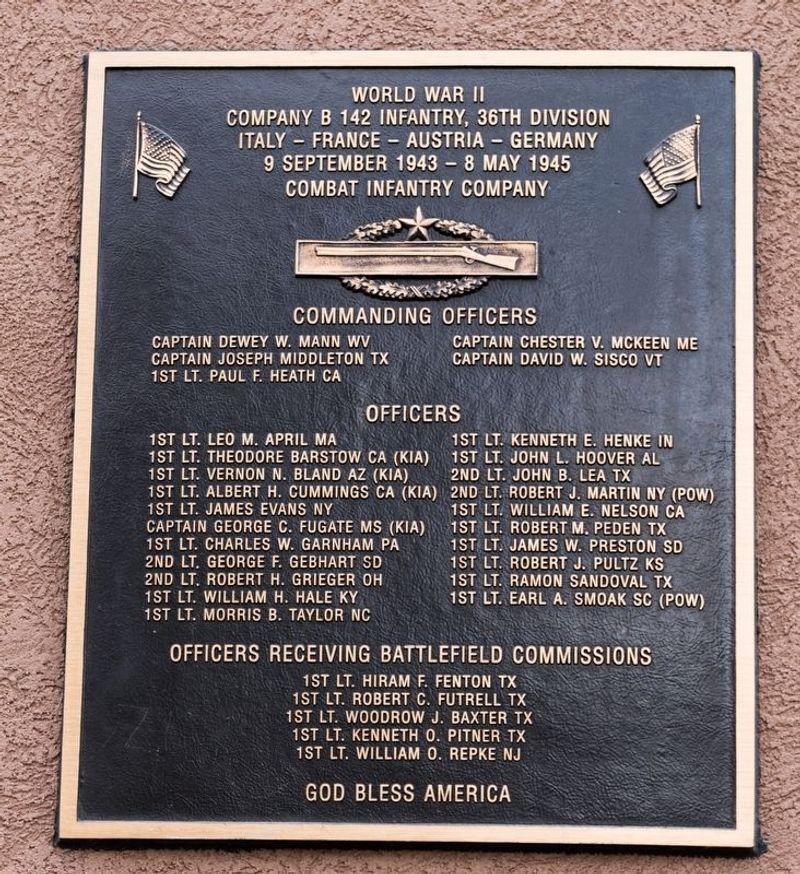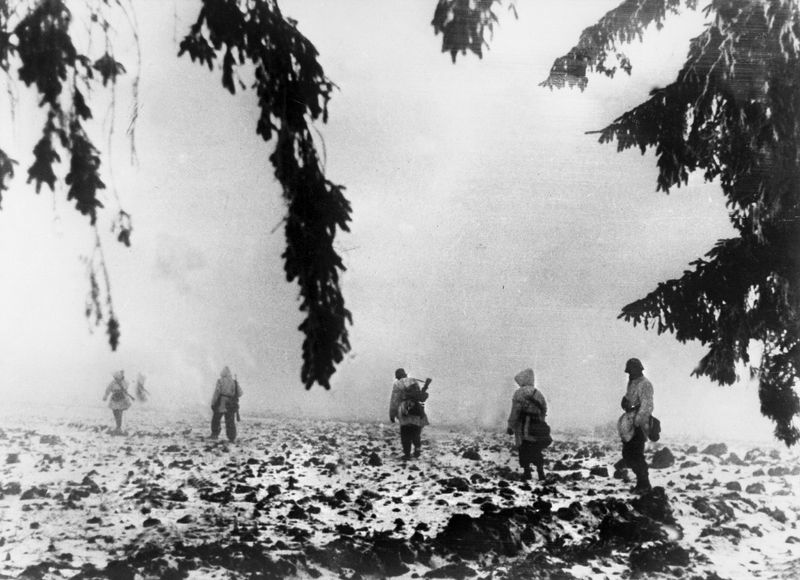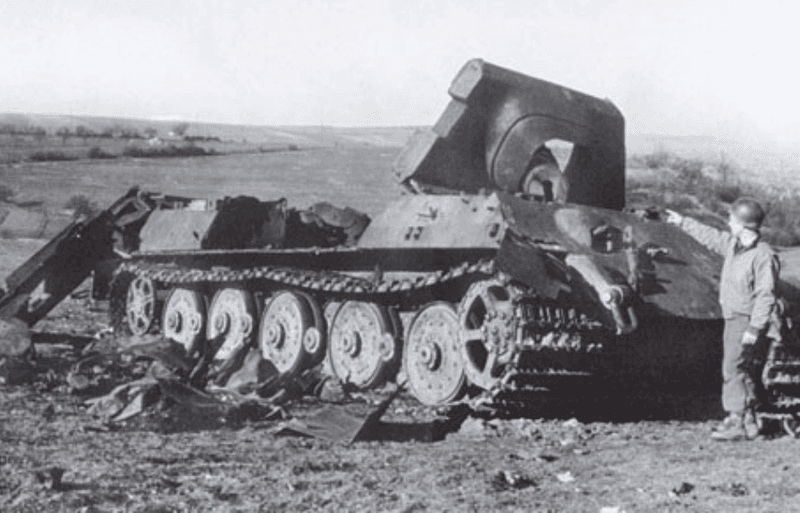During the final months of World War II, a desperate German offensive called Operation Nordwind tested American forces to their limits. While the Battle of the Bulge gets more attention in history books, this brutal winter campaign was equally deadly. American troops faced freezing conditions, relentless attacks, and impossible odds, yet certain leaders refused to back down even when surrounded. Their determination helped secure Allied victory, though at a terrible cost.
1. Last Major German Offensive in the West
Hitler’s final gamble unfolded as 1944 turned to 1945. While American forces were still reeling from the Ardennes offensive, German commanders launched Operation Nordwind in Alsace, striking with seven divisions against exhausted Allied troops.
The timing was deliberate – New Year’s Eve – when celebrations might lower vigilance. Despite intelligence warnings, the ferocity caught many American units by surprise as German forces pushed through the Vosges Mountains.
American generals faced a critical decision: withdraw to stronger positions or stand firm on vulnerable ground. The choice would cost thousands of lives either way.
2. Brutal Winter Combat
Frostbite claimed almost as many casualties as enemy fire. Soldiers huddled in foxholes as temperatures plunged to -20°F, their weapons freezing and medical supplies turning solid. The 45th Infantry Division’s men wrapped rags around their boots, having no proper winter gear.
Moving through waist-deep snow while carrying equipment became a brutal endurance test. Many collapsed from exhaustion before even encountering the enemy.
The dense Alsatian forests created perfect conditions for ambushes. German troops in white camouflage would appear like ghosts, attacking isolated American positions before melting back into the snowy landscape.
3. The “Colmar Pocket”
A fortress-like German stronghold stubbornly resisted Allied advances for months. The Colmar Pocket stretched across 850 square miles of Alsatian territory, protected by the Rhine River and defended by 15,000 determined German troops.
Street-by-street fighting in ancient villages turned medieval architecture into deadly battlegrounds. American soldiers found themselves fighting room-to-room in centuries-old buildings where narrow staircases and thick stone walls favored defenders.
French forces took heavy losses attempting to liberate their homeland. The First French Army suffered over 10,000 casualties before finally eliminating the pocket in February, freeing western Europe’s last major German-held territory.
4. U.S. Units That Refused to Retreat
Surrounded and outnumbered, the 142nd Infantry Regiment faced certain annihilation. German forces had encircled their position near Reipertswiller, cutting off all supplies and evacuation routes. Rather than surrender, Colonel George Lynch ordered his men to form a defensive perimeter.
For three days, they fought without food or medical supplies. When ammunition ran critically low, they collected weapons from their fallen comrades.
Eventually, Lynch organized a desperate nighttime breakout. Just 300 of his original 900 men made it back to American lines. Their sacrifice bought crucial time for other units to establish new defensive positions that ultimately held.
5. High Casualties
Medics worked in nightmarish conditions as casualties overwhelmed field hospitals. Evacuation routes frequently came under artillery fire, forcing doctors to perform emergency surgeries in abandoned buildings without adequate supplies.
The 70th Infantry Division lost 47% of its combat strength in just two weeks. Replacement troops, often fresh from basic training, arrived at the front only to become casualties within hours.
Veterans called Nordwind “the meat grinder.” Many companies were reduced to platoon strength, with sergeants commanding what remained of entire companies. Some units maintained effectiveness despite losing all their officers, with enlisted men stepping up to lead their comrades against overwhelming odds.
6. Forgotten Battle
History books devote chapters to the Battle of the Bulge while Nordwind receives mere paragraphs. This oversight frustrates veterans who survived the equally brutal campaign that claimed over 23,000 American casualties.
Military historians suggest the timing explains this neglect. Coming immediately after the more dramatic Bulge offensive, Nordwind seemed like an afterthought despite its strategic importance in securing the Allied southern flank.
Recently discovered German military archives reveal Hitler considered Nordwind potentially more decisive than the Ardennes offensive. The operation’s ultimate failure marked the final collapse of German offensive capabilities in the west, making the subsequent Rhine crossings possible and accelerating Germany’s defeat.
